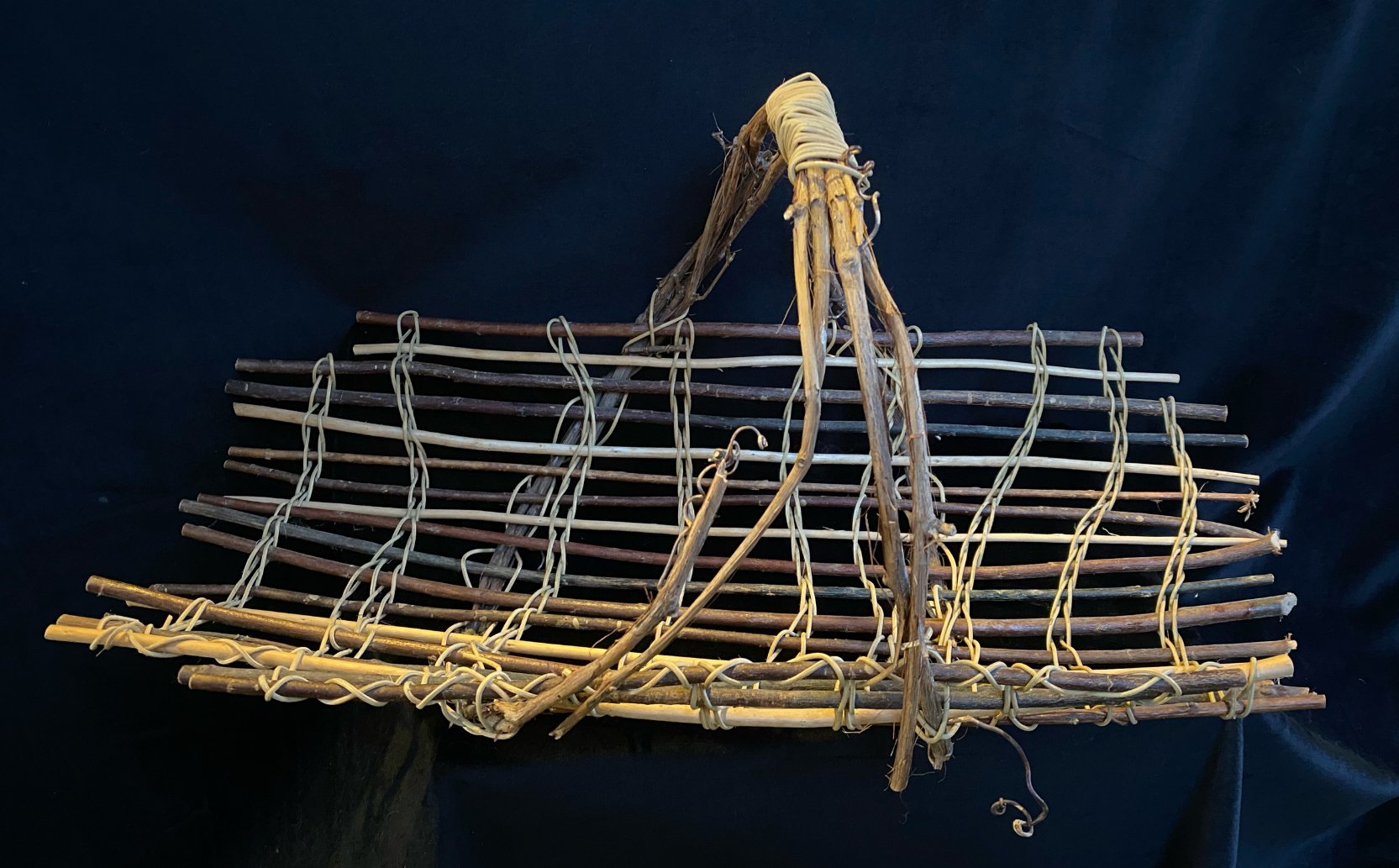Threads 82: More about handles
The frame basket.
The first frame basket that I saw came from a farmer living in Southern Ontario.
These baskets are cleverly made using two circular hoops held together and then woven by adding ribs to form the basket. Because the handle is an integral part of the woven base, the handle is strong and firm. It’s sometimes facetiously called, a bum basket.
It can also be made into a half basket by using a D-shaped hoop for the rim. See the following image below.
My first introduction to a frame basket was in the 1970s. I heard of a farmer living near Delhi, Ontario who was selling baskets in the local market. I went to visit him at his farm. He used local willow and nailed the hoops together, then woven with willow.
He came from Eastern Europe and had made them during the winter, to be used for picking potatoes in the fall. They were then used for washing the muddy potatoes by swishing them in the river. I made the basket in the photo on the left, a D-shaped frame basket made of grapevine and rush, in the 1980’s. This basket is about 9” across.
The second frame basket I saw was in the Halifax market. It was a very interesting tradition from Africa via the Southern USA.
Many years ago Halifax became a destination for many African Americans from the USA. They established gardens and needed baskets to take vegetables to the local market. Their tradition had been to make frame baskets but they needed to find a source of material locally. They cleverly discovered that red maple saplings could be cut down and made into hoops and weavers.
Edith Clayton established a business and sold a variety of baskets in the Halifax market. The red maple frame basket (photo to the right) was made by Edith Clyton, in Halifax, in the 1980’s. This basket is about 11” across. This tradition is still being carried on by her descendants.
The basket shown above was designed for gathering flowers. The rectangle shape was twined together and then fitted onto two hoops, which were wrapped together at the top. The materials are mixed colored willow and grapevine, made by Ankaret Dean, and 22” long.
The gap handle, on the left is a corn husk basket, made by Richard Nolan in 2017. It is made of Black ash and is about 12” high. This is probably the easiest way to make a handle! It does require two hands to carry it and has a very strong rim.
On the right is a very intricate, finely-made pine needle basket, 6” in diameter. The handles on this basket are more for design than for practicality.
QUIZ
Can you see the handle on this split ash agricultural basket? The answer will be in the next Threads, number 83.
Size approximately 24” x 18”. Black ash and willow. Agricultural basket. Unknown maker, 1960’s.







